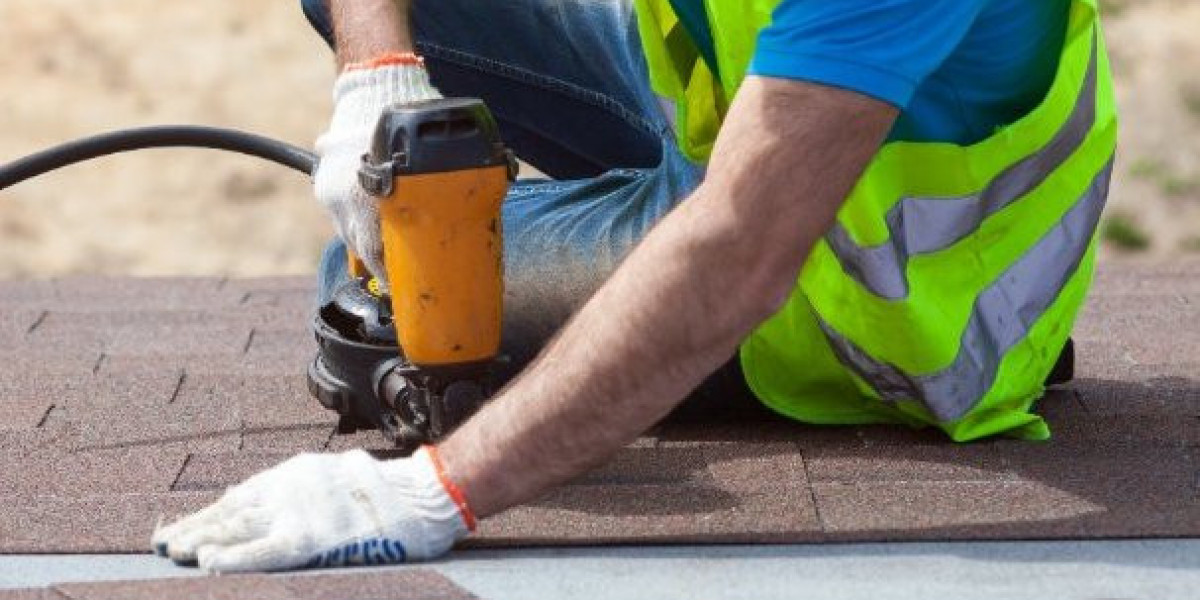Introduction
A sturdy and properly kept roof is essential for shielding your house from the elements, leaks, and structural harm.
Many homeowners face a dilemma: should they opt for emergency roof repair or go for a full roof replacement?
Making an educated choice is aided by being aware of the distinctions between these possibilities.
Emergency Roof Repair: Quick Fixes for Immediate Problems
What is Emergency Roof Repair?
A short-term or immediate fix to prevent further damage to your home.
Typically done after sudden weather damage, leaks, or unexpected structural issues.
Emergency Roof Repair Fairfax can involve patching leaks, replacing missing shingles, or securing loose parts of the roof.
Signs You Need Emergency Roof Repair
Leaks & Water Stains – Visible water stains on ceilings or walls indicate an urgent need for repair.
Missing or Damaged Shingles – High winds and storms can dislodge shingles, exposing the underlayment.
Hail or Storm Damage – Hail can dent or break shingles, weakening your roof’s protection.
Roof Sagging – A sagging roof suggests underlying structural damage.
Clogged or Broken Gutters – Water might back up and harm the roof due to improper drainage.
Fallen Tree Branches or Debris – Heavy impact can cause cracks or punctures in the roofing material.
Temporary Fixes Until Professional Help Arrives
Covering Leaks with a Tarp – Prevents further water entry until proper repairs are made.
Applying Roofing Cement – Can temporarily seal small cracks or gaps.
Clearing debris from the Roof – Helps prevent further damage from heavy objects.
Fixing Loose Shingles – Using nails or adhesives to secure them in place.
When Emergency Roof Repair is the Right Choice
The damage is minor and does not require extensive work.
You need an immediate solution before a full inspection can be conducted.
The cost of repair is significantly lower than a full replacement.
The roof is relatively new, and replacing it would be unnecessary.
Roof Replacement: Investing in Long-Term Protection
What is Roof Replacement?
A complete removal of the existing roof and installation of a new one.
Ideal when the roof is too damaged or has reached the end of its lifespan.
A long-term investment that enhances durability, insulation, and home value.
Signs You Need a Roof Replacement
Age of the Roof – Most roofs last between 20-50 years, depending on the material.
Frequent Repairs – If you’re calling for repairs multiple times a year, replacement might be the smarter option.
Widespread Shingle Damage – Curling, cracking, or missing shingles over large areas indicate deeper issues.
Multiple Leaks – Patching leaks repeatedly is not cost-effective in the long run.
Mold or Rot – Excess moisture can cause mold, leading to health hazards and structural weakening.
Energy Inefficiency – An old roof may no longer provide proper insulation, increasing heating and cooling costs.
Benefits of Roof Replacement
Stronger Protection – A new roof offers improved durability and weather resistance.
Increased Property Value – A new roof adds curb appeal and boosts resale value.
Better Energy Efficiency – Modern roofing materials help regulate indoor temperatures.
Long-Term Cost Savings – Eliminates the need for frequent repairs.
Roof Installation: What to Expect
Types of Roofing Materials
Asphalt Shingles – Easy to install, long-lasting, and reasonably priced.
Metal Roofing – Long-lasting, energy-efficient, and resistant to extreme weather.
Clay & Concrete Tiles – Elegant appearance with excellent durability.
Slate Roofing – High-end option with extreme longevity.
Wood Shingles & Shakes – Provides a natural, rustic aesthetic.
Flat Roofing (TPO, EPDM, PVC) – Common for modern and commercial buildings.
Steps Involved in Roof Installation
Roof Installation Fairfax County includes the following steps:
Inspection & Preparation – Evaluate the current roof and plan the installation.
Removing the Old Roof – Tearing off existing materials and assessing the structure.
Repairing the Roof Deck – Fixing any underlying issues before new materials are installed.
Installing Underlayment – A protective layer to prevent water infiltration.
Adding Roofing Materials – Placing shingles, tiles, or metal panels for durability.
Sealing & Flashing Installation – Ensuring water resistance around chimneys, vents, and edges.
Final Inspection & Cleanup – Check for proper installation and remove debris.
Residential Roofer: How to Choose the Right Professional
FAQs related to Residential Roofers
Are you licensed and insured?
Make sure they offer liability coverage for harm or damages and adhere to local laws.
How long have you been in the roofing business?
Experience matters when it comes to handling complex roofing projects.
Can you provide references or customer reviews?
A trustworthy roofer has to have a history of happy customers.
What type of roofing materials do you recommend and why?
A professional should know the materials best suited for your home and climate.
What is the estimated cost and payment schedule?
Get a detailed, written quote to avoid hidden fees and clarify payment terms.
Qualities of a Reliable Residential Roofer
Residential Roofer in Prince William County must have the following qualities:
Experience & Expertise – Proven track record in handling various roofing projects.
Licensing & Insurance – Guarantees adherence to industry and safety standards.
Positive Reputation – Seek out client endorsements and reviews.
High-Quality Materials – Uses durable and trusted roofing products.
Warranty & Guarantees – Provides assurance for long-term performance.
Fair Pricing & Transparency – Offers clear quotes without hidden fees.
Preventive Roof Maintenance Tips
Regular Inspections – Check for signs of damage at least twice a year.
Clean Gutters – Prevents water buildup and roof deterioration.
Trim Overhanging Branches – Lessens the possibility of debris falling.
Address Leaks Immediately – Small leaks can lead to bigger problems.
Check Flashing and Seals – Ensure proper sealing around vents and chimneys.
Monitor Roof Age – Plan for a replacement if your roof is over 20 years old.
Ensure Proper Attic Ventilation – Prevents moisture buildup and mold growth.
Conclusion
Emergency roof repair is ideal for minor, sudden damages that need quick fixes.
Roof replacement is the best solution for aging or severely damaged roofs.
Choosing between the two depends on the extent of damage, cost, and long-term benefits.
Roof installation should be done by a skilled residential roofer to ensure durability.
Hiring a qualified professional ensures quality workmanship and long-term protection.
Invest in expert roofing services to provide peace of mind and preserve your house.









